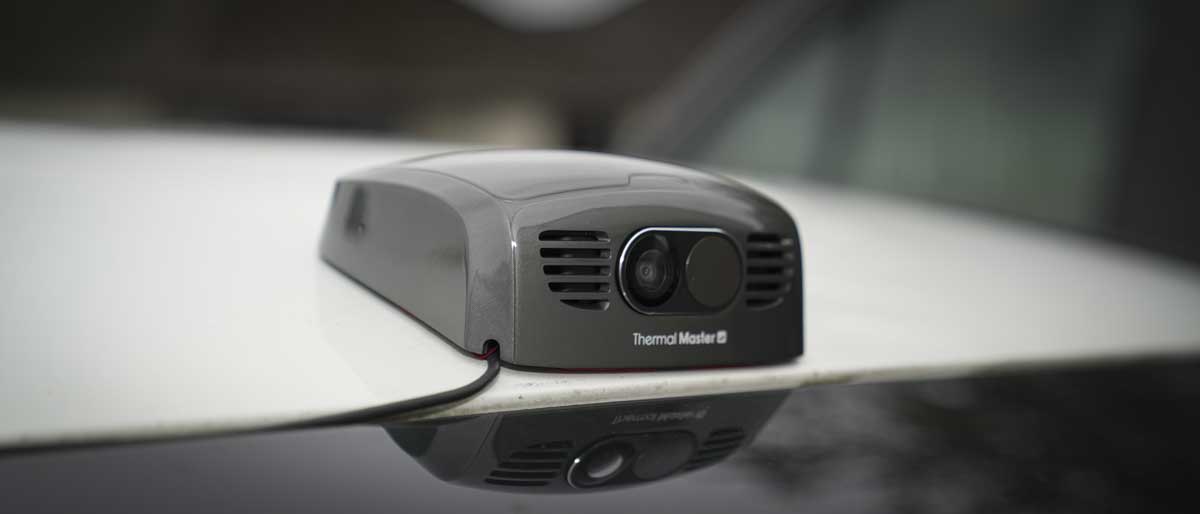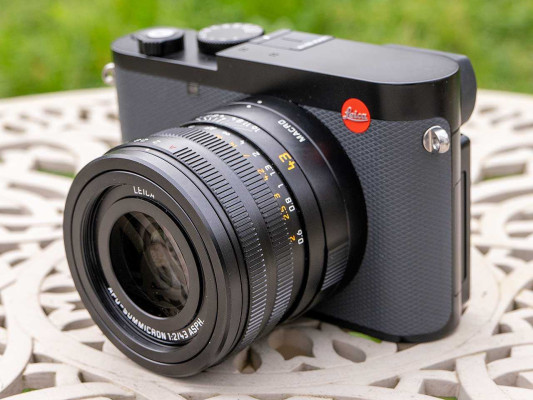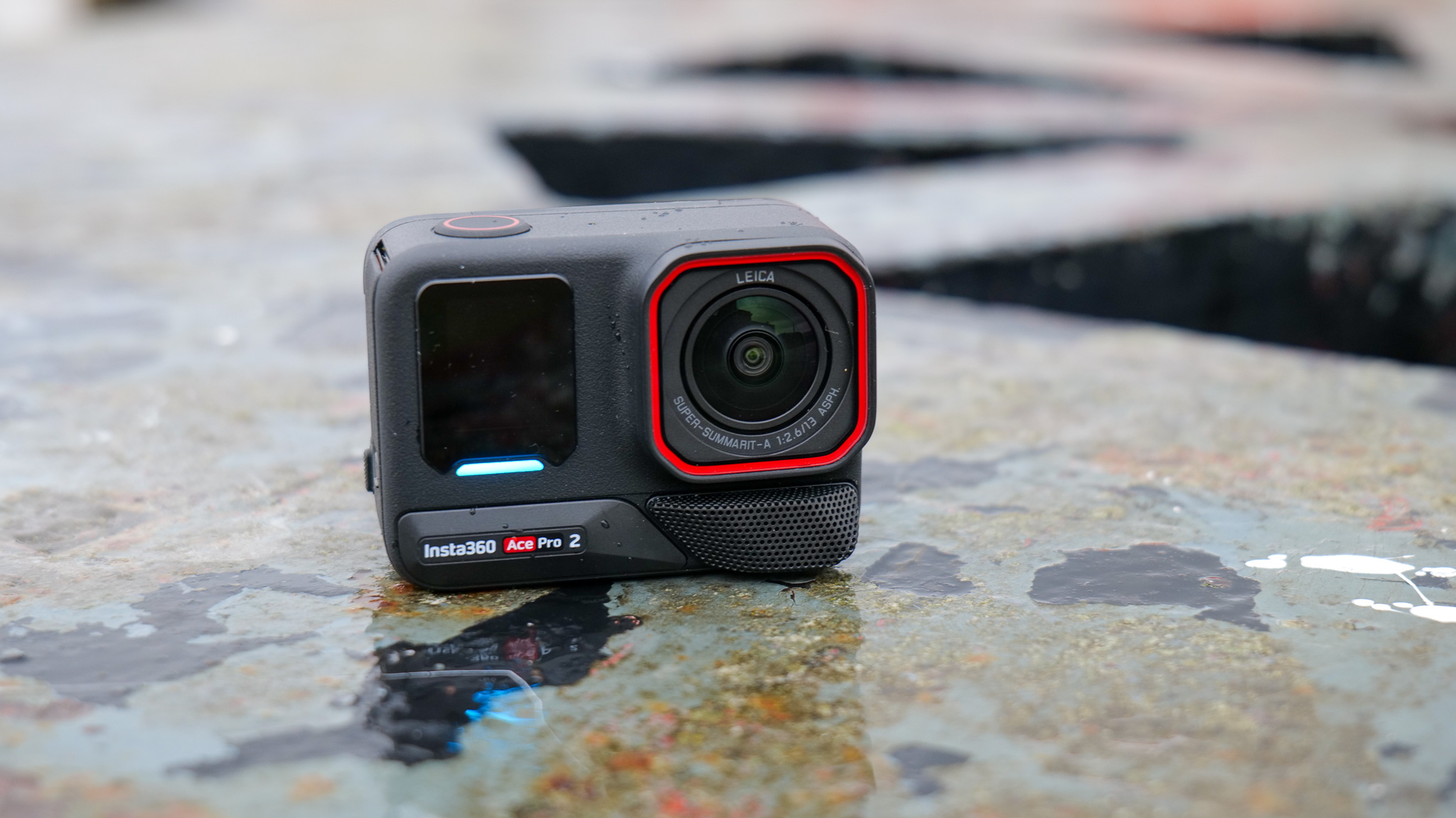Reviews

Nikon Z50II preview
DPReview Latest |
The Nikon Z50II is the company's latest entry-level APS-C mirrorless camera, built around a 21MP CMOS sensor. As with the original Z50, it's expressly aimed at stills and video creators looking for a small camera that makes it easy to upload.
It brings updated burst modes and AF functions to its predecessor, but most of the advancements are on the video side of the camera.
Key specifications
- 20.9MP APS-C sensor
- Twin control dials
- Full-width 4K video up to 30p (60p with crop)
- 3D-tracking autofocus and subject recognition for nine subject types
- Up to 11fps mechanical, with up to 1 second pre-release capture
- Fully articulated 3.2" touchscreen
- Single UHS-II SD card slot in battery compartment
- 2.36M dot EVF with brightness up to 1000nits
The Z50II will retail for $909 body-only and $1,049 as a kit with Nikon's DX 16-50 F3.5-6.3 lens. The company says it'll be available in "late November."
Index:
- What's new?
- How it compares
- Body and handling
- How it compares
- Initial impressions
- Sample Gallery
- Specifications
- Press release
What's new
 |
The Z50II is, as the name suggests, an updated version of the company's original APS-C Z-mount camera. Much of what it gains comes from the use of a newer, more powerful Expeed 7 processor, but there are some subtle yet potentially significant additions beyond that.
Flexible Color Picture Control and Picture Control Button
 |
| The new Picture Control button is right above the rear control dial. |
It's a change unrelated to processing power that helps signpost what the Z50II is and who it's intended for: the addition of a dedicated 'Picture Control' button to let you select the camera's color mode.
The changes go deeper than the labeling of a button, though. The Z50II becomes the first model to offer 'flexible' Picture Control profiles that let you adjust or download additional profiles. The camera comes with 31 but you can add more, and limit which ones appear when you hit the Picture Control button, so that it doesn't become overwhelming.
Nikon has, at least as far back as 2008, been one of the few brands to offer software to let you edit its in-camera profiles. The company's NX Studio software lets you adjust the existing Picture Controls, applying your own custom tone curve or changing the sharpening and saturation of the profile. However, you only get limited control over the color response, with a global hue adjustment, rather than the ability to re-map colors that a LUT would give.
It's the ability to download Creator Recipe profiles from Nikon's Imaging Cloud that we suspect most users will experiment with.
Brighter viewfinder
 |
The Z50II also gains a brighter viewfinder, now capable of displaying up to 1000 nits, double the maximum brightness of the one in the existing model. The display isn't bright enough to fully preview HLG high dynamic range capture though, and is still the same 2.36M dot resolution.
Subject recognition / 3D Tracking
One of the most significant improvements that does come from the new processor is the Z50II's autofocus system. It gains the subject recognition modes from other recent Nikon cameras, boosting the number of recognized subjects from three to nine.
| Nikon Z50II | Nikon Z50 / Zfc | |
|---|---|---|
| Subjects recognized |
|
|
It also adds the 3D Tracking AF mode, that makes it quicker to track subjects, regardless of whether the camera has been specifically trained to recognize them.
C30 and pre-burst
Another Expeed 7 feature to arrive on the Z50II is its ability to shoot at high speeds in e-shutter mode, with the option to start buffering images when the shutter is half-pressed and saving images captured up to one second before the shutter button is fully depressed.
The Z50II's C30 and C15 modes can shoot with autofocus at up to 30fps or 15fps, respectively, though it only records JPEGs.
Nikon Imaging Cloud
The Z50II is also compatible with Nikon's Imaging Cloud service, which debuted with the Z6III. That means that, when connected to a Wi-Fi network, it can automatically upload your photos to Nikon's servers, which shuffle them off to your choice of third-party cloud storage services, such as Dropbox, Google Drive, or Lightroom. You can also have your camera automatically download firmware updates, and have it sync Picture Control presets that you've selected on your computer or phone. While many cameras have similar features, they have to be paired with a smartphone or camera to use them – the Z50II can do it on its own connected to your router.
What's new for video:
Despite using the same sensor as the Z50, Nikon has managed to squeeze significantly better video out of it. The Z50II can now encode video in 10-bit precision, allowing internal N-Log capture to maximize color and tone grading potential, or HLG high dynamic range capture for playback on HDR displays and TVs.
The Z50II also gains the ability to capture 4K/60 footage from a cropped region of the sensor.
On top of this, Nikon says the electronic image stabilization (eVR) in video mode is improved. The Z50II also gets a "product review" autofocus mode, that knows to override its face detection AF if an object is held up in front of the camera: a feature that can be useful for vloggers discussing a specific product they want to show.
How it compares
The Z50II arrives into what was previously a competitive point in the market but one that fewer and fewer manufactuers seem to be catering to. Fujifilm offers the similarly beginner-friendly X-M5 for around $200 less, but with no viewfinder, or the high-resolution, image stabilized X-T50 for a whopping $400 more. Meanwhile, Sony offers the now rather elderly a6400 at a comparable price. It makes fewer accommodations to people new to ILCs and its age means its video spec lags way behind.
It's only really Canon, with its EOS R10 that offers an approximately like-for-like competitor to the Z50II. The other camera we feel it makes sense to compare is Nikon's own Zfc. It has near identical spec to the original Z50, other than it has a fully articulated rear screen. By including another Nikon entry-level camera, we can see what's changed over the past five years.
| Nikon Z50II | Canon EOS R10 | Sony a6400 | Nikon Zfc | |
|---|---|---|---|---|
| MSRP (With kit zoom) | $909 ($1049 w/ 16-50 F3.5-6.3) | $979 | $900 | $960 |
| Pixel count | 20MP | 24MP | 24MP | 20MP |
| Image stabilization | No | No | No | No |
| Max frame rate |
11fps (mech) 30fps (e-shutter, JPEG) |
15fps (mech) 23fps (e-shutter) |
11fps (mech) 8fps (e-shutter) |
11 fps (12-bit Raw) 9 fps (14-bit) |
| Viewfinder res. / mag. |
2.36M dot 0.68x |
2.36M dot 0.59x |
2.36M dot 0.71x |
2.36M-dot 0.68x |
|
Rear screen res. / type |
3.2" / 1.04M dot fully-articulated | 3.0" / 1.04M dot fully-articulated | 3.0" / 921k dot tilting touchscreen | 3.0" / 1.04M-dot fully-articulating |
| AF selection | Touchscreen / D-pad | Touchscreen / joystick | Touchscreen / D-pad | Touchscreen / D-pad |
|
Video |
UHD 30p full-width UHD 60p with 1.5x crop |
UHD 30p full-width UHD 60p from 1.56x crop |
UHD 24p full width 30p with 1.22x crop |
UHD 30p/24p full-width |
| 10-bit options | N-Log, HLG | HDR PQ | No | No |
| Mic / headphone sockets? | Yes / Yes | Yes / No | Yes / No | Yes / No |
| CIPA Battery rating (LCD/EVF) | 250 / 230 | 350 / 210 | 410 / 360 | 360 / 310 |
| Weight | 520g (18.3 oz) | 426g (15oz) | 403 g (14.2oz) | 445g (15.7oz) |
| Dimensions | 127 x 97 x 67mm (5.0 x 3.8 x 2.6") | 126 x 88 x 83 mm (5.0 x 3.5 x 3.3") | 120 x 67 x 60 mm (4.7 x 2.6 x 2.4") |
135 x 94 x 44 mm (5.3 x 3.7 x 1.7") |
As well as advances in technology, another change since we reviewed the Z50 is that both Nikon and Canon have allowed some third-party lenses into their respective APS-C systems. In the case of Nikon, that includes three of Sigma's DC DN prime lenses, which add relatively affordable ways to boost the camera's capabilities. Canon, meanwhile, has allowed Sigma to offer its two DC DN zooms, with four prime lenses to follow.
This still leaves both systems well short of the variety of APS-C focused lenses offered for Fujifilm's X mount, or of the selection available for Sony, but means you're not solely dependent on the camera maker's development priorities for either camera anymore.
Body and handling
 |
The body of the Z50II is very much like that of its predecessor, which is to say it's like a slightly shrunk-down version of Nikon's original Z-series full-frame models. Despite the size reduction, the Z50II retains a fairly substantial hand grip.
The body is primarily made from fiber-reinforced plastic, which gives it a fairly solid feel without becoming overly heavy. There's a textured coating around the handgrip and the back corner of the camera that gives a comfortable and reassuring amount of grip on the camera. The front and rear command dials are well positioned for forefinger and thumb operation without any need to shift your hand position on the camera.
 |
It gains four extra buttons along the back of the camera, compared with its predecessor, which means its controls much more closely mimic those of the full-frame Z models, with dedicated +/– zoom buttons, a drive mode button and a 'DISP' button being added. There's an additional button on the top of the camera, too: just behind the existing [REC], ISO and Exposure Comp buttons is a dedicated 'Picture Control' button.
It doesn't gain the joystick that the full-frame models have, though, and the Stills/Movie switch they feature around their DISP buttons is instead on the Z50II's top plate. The Play and Drive Mode buttons are transposed relative to the full-frame models, but we doubt enough people will be trying to shoot both side-by-side for this difference to matter).
The Z50II also moves from a tilt up/down screen to a fully articulated one, as featured on the Zfc and Z30. Nikon has described all four of its APS-C Z-mount models as being for 'creators,' so this change is no real surprise.
Viewfinder & screen
 |
The Z50II's viewfinder can now go as bright as 1000 nits: twice as bright as the one in the older model, which should mean there's less need for your eye to adapt when you're using the camera in bright sunshine. It's not bright enough to fully preview HLG images, though.
It remains a relatively low resolution 2.36M dot display, in keeping with the Z50II's lowly position in the lineup. It offers 0.68x magnification, in equivalent terms, which is pretty large for a camera at this price.
Ports & slots
 |
The Z50II's specs tell the story of how far we've come in the five years since the launch of the original model. Its SD card slot can now make full use of the faster UHS-II cards, while its USB socket has been upgraded to the Type C standard and 5Gbit/s transfer rates. It's also been made compatible with the UVC/UAC USB video and audio standards, so it can be used as a webcam without the need for any specialist drivers or software.
The camera also gains a headphone socket to allow audio monitoring, something that really boosts its usefulness as a video camera.
Battery
 |
The Z50II uses a new EN-EL25a battery, which sees the capacity increase from 8.5Wh to 9.4Wh. Despite this 10% increase, the CIPA battery ratings for the Z50II are 250 shots per charge using the rear screen and 230 using the viewfinder. These are around 20% lower than on its predecessor, presumably as a consequence of the more powerful processor.
CIPA figures tend to assume extensive use of flash and rather more looking at image review than most people actually do, so we wouldn't be at all surprised to get twice as many shots as this in our own usage, more if we were shooting bursts. You can also gain around 9 percent more shots if you engage power-saving mode, but these aren't great figures for a camera you might want to use a lot.
As you'd expect, the camera can be charged over its USB-C socket, so there are ways to top the battery up fairly easily. However, it does not come with a battery charger in the box.
Initial impressions
By Mitchell Clark
 |
From a certain angle, the Z50II is a minor update to its predecessor. It has the same sensor housed in a similar body and doesn't add anything revolutionary – there are no features that are unheard of for its category or that make us rethink what's possible with photography.
That's not a bad thing. The Z50II's main audience is first-time camera buyers, and when I think back to when I was getting into photography, the Z50II would've been exactly what I was looking for – something that gets the basics right without costing an arm and a leg.
I only got to spend a day shooting with the Z50II, but during that time nothing about it felt budget. The ergonomics and build quality felt just right for its size, and its performance was snappy; I never felt like I was waiting around for the camera or that it couldn't shoot fast enough to capture whatever I pointed it at.
The autofocus, in particular, was a standout. We've praised Nikon's 3D Tracking system and subject recognition before, and it's just as capable in the Z50II. In the past, the autofocus situation on beginner-focused cameras has been awkward: people who aren't experienced need the most help, but the most capable systems are also the most expensive ones, so they don't make it into lower-end cameras. That's not the case with the Z50II.
 |
|
The Z50II's autofocus system was confidence-inspiring, even in automatic subject detect mode. ISO 100 | 1/400 sec | F4 | Nikon Z 70-200mm f2.8 VR S w/ 1.4x teleconverter Photo: Mitchell Clark |
It even features automatic subject detection, giving you one less thing to think about when you're scrambling to get the shot. That'd be great for parents looking to get great shots of their kids playing sports – or pet owners looking to show off their fast-moving dogs and cats – without breaking the bank.
The video features are also robust, to the point where it feels like Nikon's targeting not just content creators but first-year film students, too. Beginner photographers who also want to capture video will be happy with its standard 4K capabilities, but they won't have any use for features like N-Log and waveforms.
Then there's the Picture Control button. I'm not entirely convinced color profiles are the thing to draw new people into photography, but camera manufacturers seem to disagree – this year we saw Panasonic debut its LUT button, and Fujifilm release two cameras with film simulation dials.
 |
Even if the crowds are craving color control, the indirectness of Nikon's system could make it a little tricky for beginners. You don't beam them directly from your phone to your camera; you select which ones you want in Nikon's app, and then your camera downloads them via Wi-Fi. My years in tech support tell me there will be some confusion based on the camera needing to be connected to the internet on its own.
The real elephant in the room is lenses. The company makes five 'DX' lenses for its APS-C systems: a single prime and four zooms with maximum apertures of 3.5 or higher. There are several third-party autofocus primes, including some of the very good Sigma DC DN Contemporaries, but if you want a zoom with a consistent or fast aperture, you'll have to use a heavier, more expensive full-frame option from Nikon.
Sample gallery
Please do not reproduce any of these images on a website or any newsletter/magazine without prior permission (see our copyright page). We make the originals available for private users to download to their own machines for personal examination or printing (in conjunction with this review); we do so in good faith, so please don't abuse it.
















